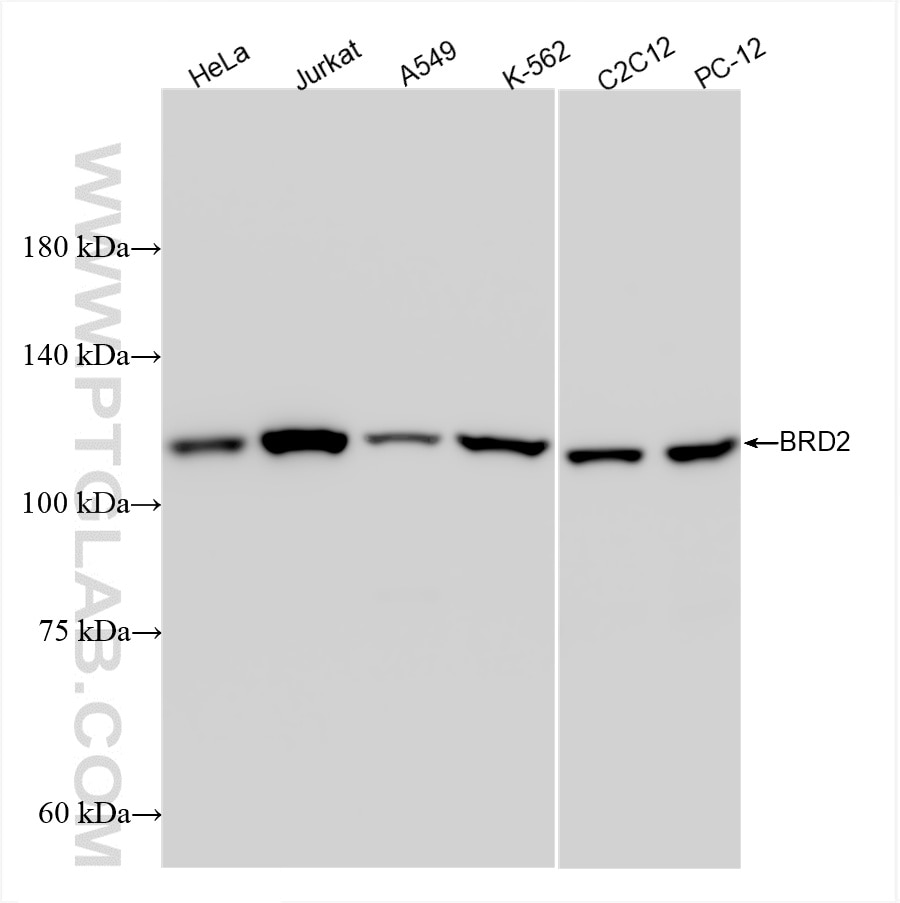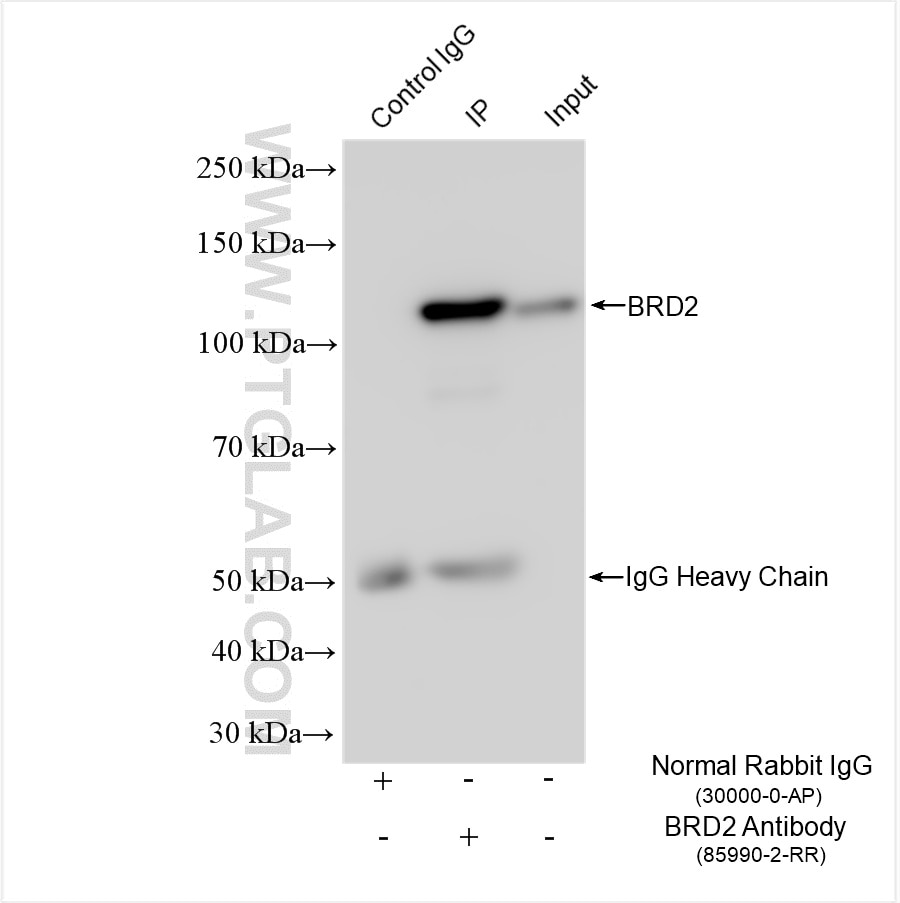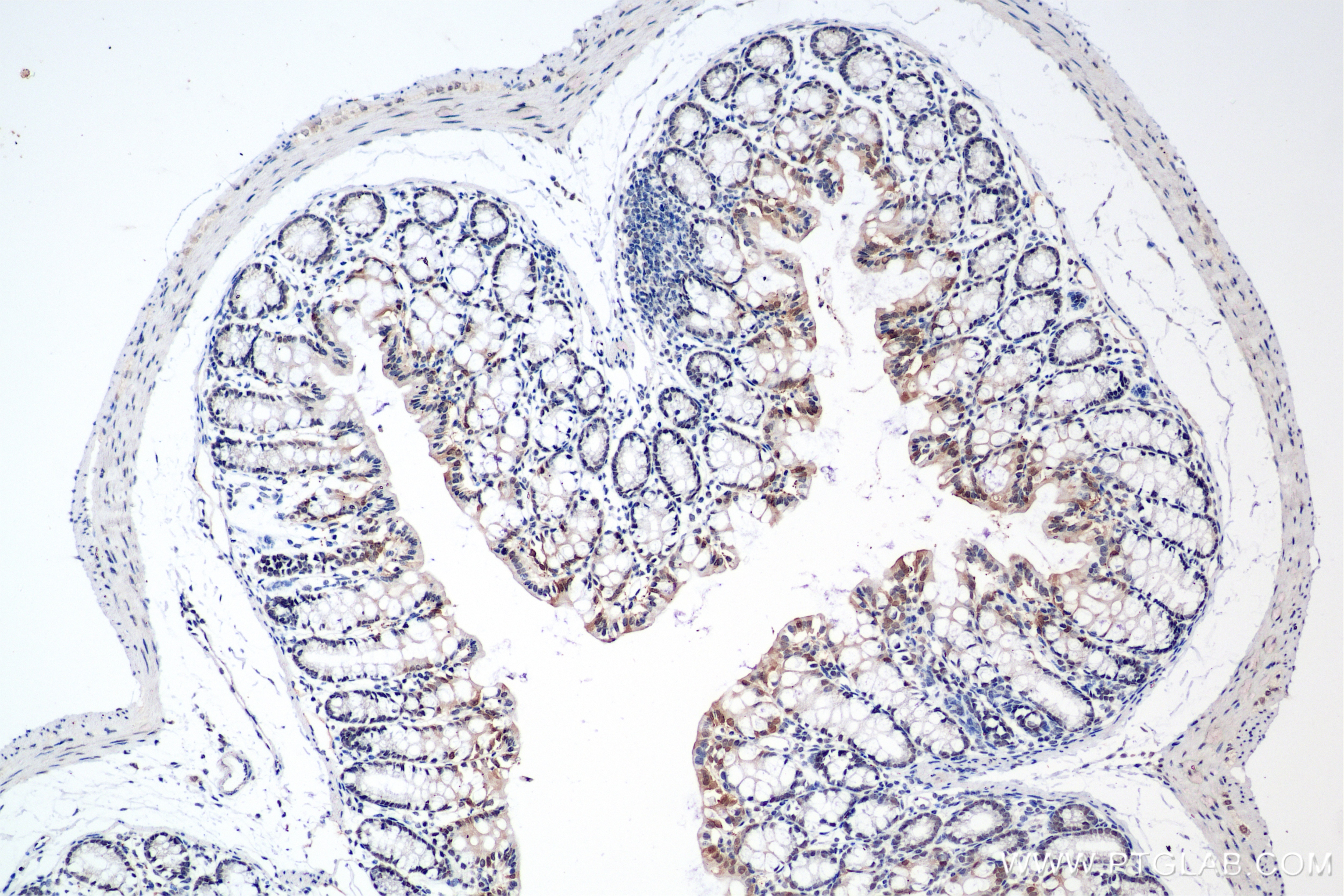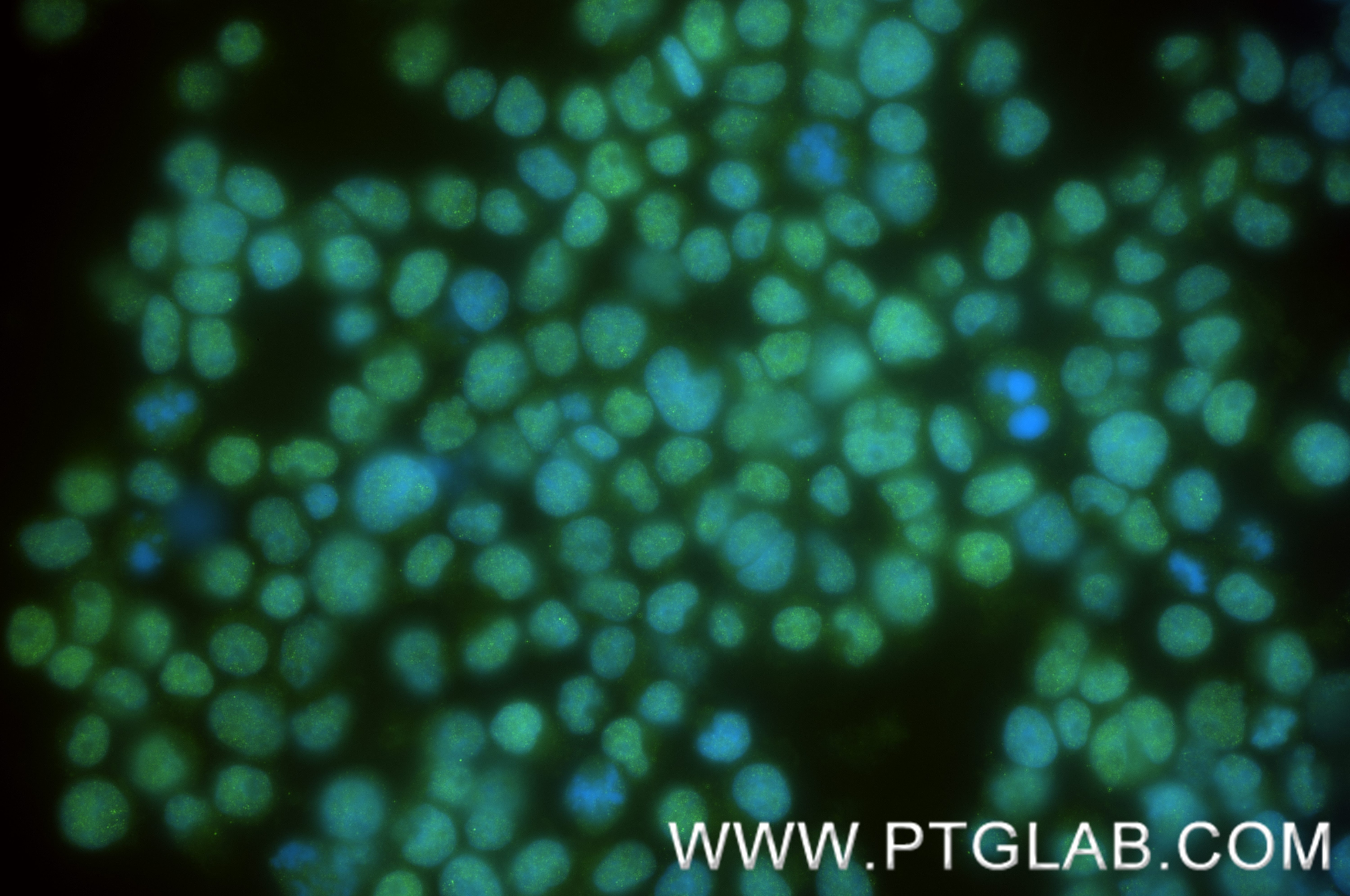Product Information
85990-2-PBS targets BRD2 in WB, IF/ICC, IP, Indirect ELISA applications and shows reactivity with human, mouse, rat samples.
| Tested Reactivity | human, mouse, rat |
| Host / Isotype | Rabbit / IgG |
| Class | Recombinant |
| Type | Antibody |
| Immunogen |
CatNo: Ag17589 Product name: Recombinant human BRD2 protein Source: e coli.-derived, PGEX-4T Tag: GST Domain: 537-668 aa of BC063840 Sequence: LSQGPISKPKRKREKKEKKKKRKAEKHRGRAGADEDDKGPRAPRPPQPKKSKKASGSGGGSAALGPSGFGPSGGSGTKLQAGVQWRDLGLLQPPLLGFKRFSCLSLPSSQDYRLPKKATKTAPPALPTGYDS Predict reactive species |
| Full Name | bromodomain containing 2 |
| Calculated Molecular Weight | 836 aa, 92 kDa |
| Observed Molecular Weight | 100-110 kDa |
| GenBank Accession Number | BC063840 |
| Gene Symbol | BRD2 |
| Gene ID (NCBI) | 6046 |
| Conjugate | Unconjugated |
| Form | Liquid |
| Purification Method | Protein A purification |
| UNIPROT ID | P25440 |
| Storage Buffer | PBS only, pH 7.3. |
| Storage Conditions | Store at -80°C. |
Background Information
BRD2 (Bromodomain-containing protein 2), also known as RING3, is a member of the Bromodomain and Extra-Terminal (BET) family of proteins. These proteins contain two bromodomains and one extra-terminal domain. BRD2 primarily localizes to the nucleus and functions as an atypical protein kinase. Its main role involves the activation of E2F1 and E2F2 proteins, facilitating the production of proteins essential for the G1/S phase transition of the cell cycle. BRD2 specifically recognizes acetylated histones through its bromodomains, particularly acetylated lysine residues on histones H3 and H4. This interaction allows BRD2 to recruit various transcription factors, co-activators, and repressors, thereby modulating transcriptional activity. BRD2 plays a crucial role in chromatin remodeling by recruiting proteins such as histone deacetylases. It is highly expressed during neural tube development and closure, making it essential for neurogenesis and embryogenesis.(PMID: 33462181, PMID: 37926722)










